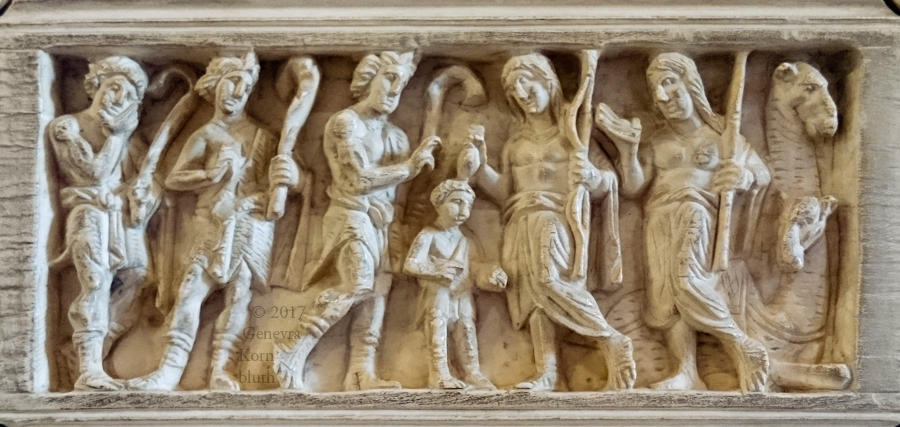Amazon Audible Gift Memberships

Try Amazon Audible Premium Plus and Get Up to Two Free Audiobooks
Throne of Archbishop Maximian of Ravenna
Constantinople or Alexandria, 545–553AD
A Detail of the Story of Joseph
on the left hand side of the throne
Joseph's Brothers sell him to the Midianite or Ishmaelite Merchants

Photo by Kornbluth
Illustrations of pre-Islamic Arab warriors are rare; the clearest come from neighbouring civilisations, and in Byzantine art Arab bedouin appear in the biblical story of Joseph.
In these small mid-6th century ivory panels, probably from Syria or Egypt, the tribesmen buy Joseph from his brothers (above) and sell him to the Egyptian officer Potiphar (below).
Note long plaited hair characteristic of pre-Islamic Saracenoi; they are armed with bows and short spears or javelins. (Throne of Archbishop Maximian, Cathedral Museum, Ravenna)
Source: MAA - 125 - The Armies of Islam 7th-11th Centuries by David Nicolle & Angus McBride
The Throne of Maximian (or Maximianus) is a throne that was made for Archbishop Maximianus of Ravenna and is now on display at the Archiepiscopal Museum, Ravenna.
It is generally agreed that the throne was carved in the Greek East of the Byzantine Empire and shipped to Ravenna,
but there has long been scholarly debate over whether it was made in Constantinople or Alexandria.
Back to The Story of Joseph on the left side of the Throne of Archbishop Maximian, Byzantine or Coptic, c.545–553AD
Referenced as Fig. 23 in The military technology of classical Islam by D Nicolle
23. Ivory panels, "Arab traders with the young Joseph," Throne of Maximian, c.550 AD, Byzantine or Coptic, Cathedral Museum, Ravenna (Lar B & M).
Pole-Arms for cut and thrust by David Nicolle, an extract from The military technology of classical Islam



